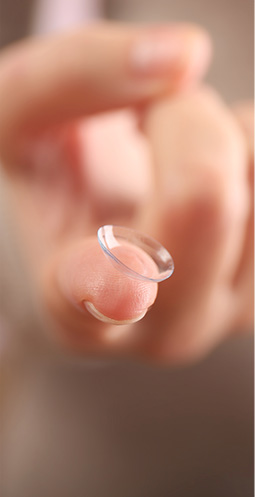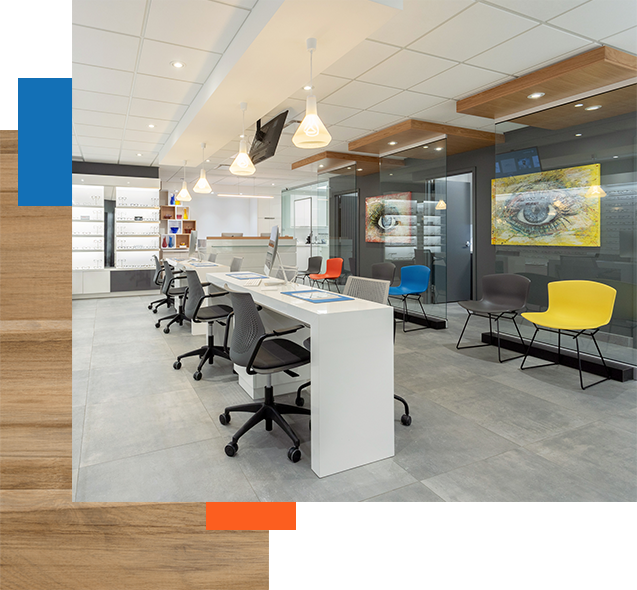What is Blue Light ?
The visible spectrum is made up of the visible light that the human eye can detect, consisting of wavelengths of light from approximately 380 to 700 nanometers. Wavelengths shorter than this are in the ultraviolet range and wavelengths longer than this are in the infrared range—both of these are invisible to the human eye.
Blue light falls in the lower end of the visible light spectrum, roughly in the 400-490 nanometer range. This is also the range of the visible light with the highest energy and tends to contribute to digital eye strain.
Can I Wear Blue Light Lenses All the Time?
Blue light is all around us, especially in our digital world as we are looking at more and more sources of blue light. Having blue light reduction glasses helps to relieve eye strain and helps to balance the amount of light coming through to your eyes each day. If you have blue light lenses, you can wear them safely all the time.
Many of us have some sort of device, whether it be a computer, cellphone, or tablet, that we look at every day. The blue light coming from these devices tends to scatter, which can make it more difficult for our eyes to focus. Blue light lenses can lessen the strain put on our eyes from screen use.
Even if you do not require corrective lenses, you are still able to get special glasses that filter blue light. The blue light coming from our devices can lead to eye irritation. Many people suffer from digital eye strain as about 90% of people spend 3 hours or more looking at a screen of some sort, whether for a job or social entertainment.
How do I Know if Blue Light Lenses Are Right for Me?
Many of us need to look at a screen at some point in our day, often for extended periods of time. Whether you realize it or not, you could be suffering from digital eye strain. Blue light lenses can help to reduce some of the uncomfortable symptoms.
Some common signs you could be experiencing eye strain are:
- Dry eyes
- Headache
- Heavy or drowsy eyelids during the day
- Difficulty focusing
- Sore shoulders and neck
- Sensitivity to light
- Double or blurry vision
- Sore and itchy eyes
If you frequently have any of the symptoms above, blue light lenses may be helpful for you.
Some of the risks for eye strain can be fixed more easily than others. While some of us cannot limit our time in front of a screen to under 3 hours, other things can be done to help reduce some of the everyday strain on our eyes.
Keeping screens at a further distance from our eyes—at least an arm’s length—will lessen the strain. Making the room that you are working in brighter so that you are not depending only on the light of the device will also help with strain.
If you’re able to, break up the amount of time in which you are looking at a screen. Managing this time can give your eyes a break and may make you more productive if it reduces your symptoms. Blue light lenses can also help to reduce much of the strain.

Will Blue Light Lenses Affect My Vision if I Don’t Wear Corrective Lenses?
Every day your eyes are exposed to different sources of light such as the sun, overhead lighting, or digital screens. Whether it is the natural light of the sun or artificial light, many day-to-day activities involve some form of blue light. Even if you do not need corrective lenses, blue light glasses could help reduce your daily eye strain without affecting your vision. Blue light exposure typically comes at a lesser intensity through digital screens than it does through natural sunlight,. Different levels of exposure to light at different times of day can have both positive and negative effects.
Some positive effects of natural light exposure can include:
- Mood-boosting abilities
- Cognitive and memory function improvements
- Circadian rhythm enhancement, which helps to maintain our sleep and wake cycles
Some negative effects of overexposure are:
- Nighttime exposure can lead to poor sleep quality
- Difficulty falling asleep
- Tiredness and fatigue during the day, which can lead to lower productivity
Blue light from digital devices does not cause any physical damage to our eyes. As mentioned above, the primary source of blue light is from the sun. However, for certain patients, exposure to this end of the light spectrum for prolonged periods of time when looking at digital devices can lead to symptoms of eye strain as described above. The use of these lenses can noticeably improve the comfort of our eyes when we are on digital devices and reduce eyestrain symptoms.
Can Using Digital Devices Affect Sleep?
Can Using Digital Devices Affect Sleep?
Exposure to blue light in the evenings can affect our natural circadian rhythm, which is our sleep cycle. The blue light affects the secretion of melatonin, a hormone secreted by the pineal gland that helps maintain our natural inner clock and helps us sleep. Exposure to blue light will reduce the secretion of melatonin and may disrupt the sleep cycle for certain patients. This can cause some patients to have a hard time falling asleep or disrupt their sleep. Using lenses with blue filtering may help reduce this effect.
Are All Blue Filtering Lenses the Same ?
Not all blue filtering lenses are created equal. Some lenses filter too much blue light and can have a yellow tint to them. Others may not filter enough of the blue light and not be very effective. Your optometrist can prescribe the appropriate type of blue filtering lenses for you.
How do I Get Blue Light Lenses?
If you spend long periods of the day in front of a screen, blue light lenses can help alleviate the strain your eyes may experience. Even if you do not wear corrective lenses, you can speak to the eye doctors at Stoney Creek Eye Care about how blue light lenses can help you. We can help you find a pair of coated glasses to help take the pressure off of your eyes.
If you have questions about what’s best for your eye health, request an appointment at Stoney Creek Eye Care to learn more.









